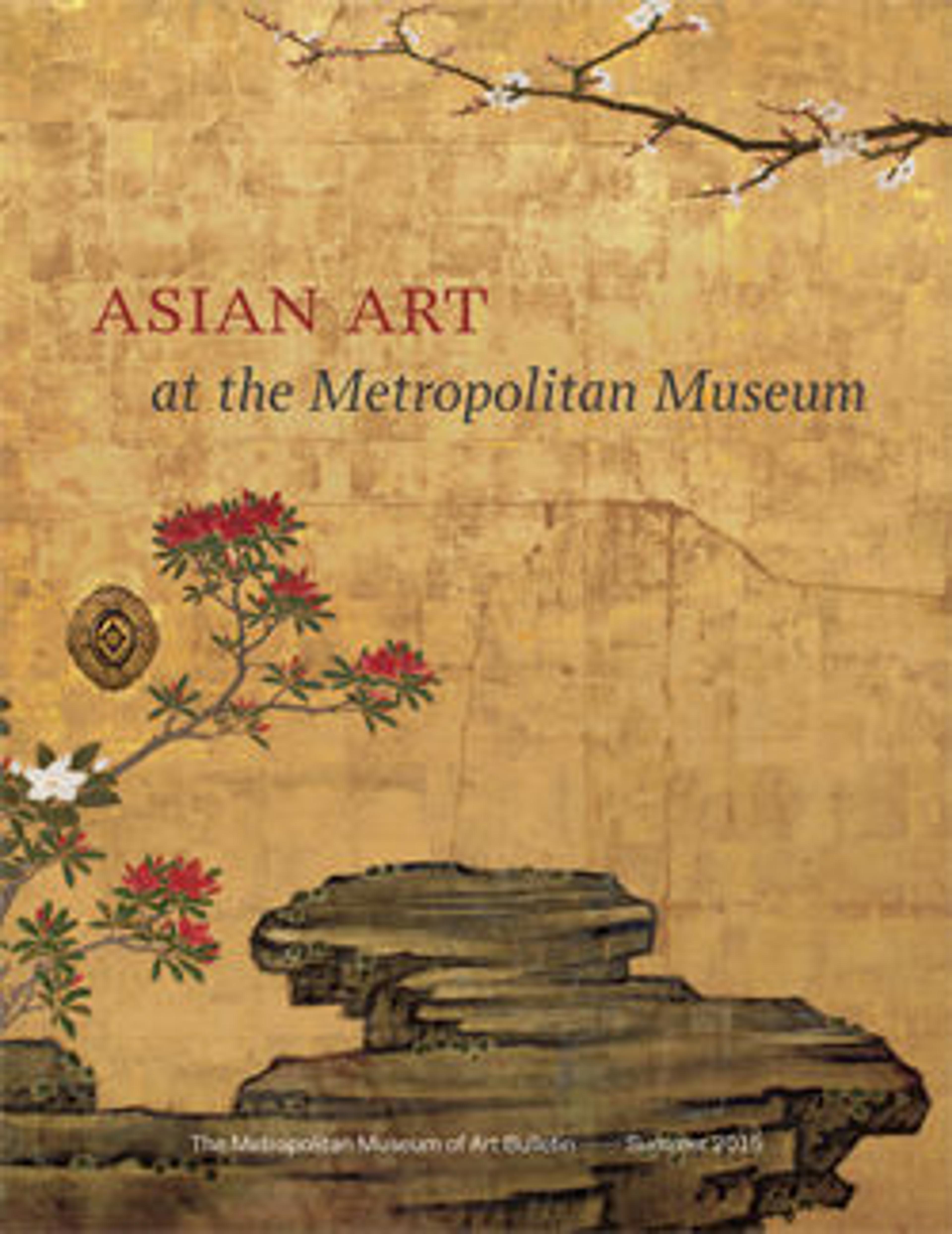Noh Robe (Nuihaku) with Butterflies, Chrysanthemums, Maple Leaves, and Miscanthus Grass
The term nuihaku is a compound word made up of two textile techniques: embroidery (nui) and application of metallic leaf (haku). Elegant costumes like this one were mainly used for roles of young female protagonists in Noh plays. In the Edo period, landscapes and autumn grasses associated with poetry and classical literature became popular motifs for this type of robe. On this example combining spring and autumn imagery, playful butterflies fly over colorful chrysanthemum flowers, scattered maple leaves, and curving miscanthus grass. The waist area is left undecorated—in the seventeenth century these garments were used as outer robes and were often worn turned down at the waist. The style of the design and the embroidery recall Momoyama-period (1573–1615) robes, as well as folding screens and Kōdaiji maki-e lacquers with similar compositions.
Artwork Details
- 胴箔地薄菊紅葉蝶模様縫箔
- Title: Noh Robe (Nuihaku) with Butterflies, Chrysanthemums, Maple Leaves, and Miscanthus Grass
- Period: Edo period (1615–1868)
- Date: second half of the 18th century
- Culture: Japan
- Medium: Silk satin with silk embroidery and gold leaf
- Dimensions: Overall: 63 3/4 x 54 in. (161.9 x 137.2 cm)
- Classification: Costumes
- Credit Line: Purchase, Joseph Pulitzer Bequest, 1932
- Object Number: 32.30.1
- Curatorial Department: Asian Art
More Artwork
Research Resources
The Met provides unparalleled resources for research and welcomes an international community of students and scholars. The Met's Open Access API is where creators and researchers can connect to the The Met collection. Open Access data and public domain images are available for unrestricted commercial and noncommercial use without permission or fee.
To request images under copyright and other restrictions, please use this Image Request form.
Feedback
We continue to research and examine historical and cultural context for objects in The Met collection. If you have comments or questions about this object record, please contact us using the form below. The Museum looks forward to receiving your comments.
